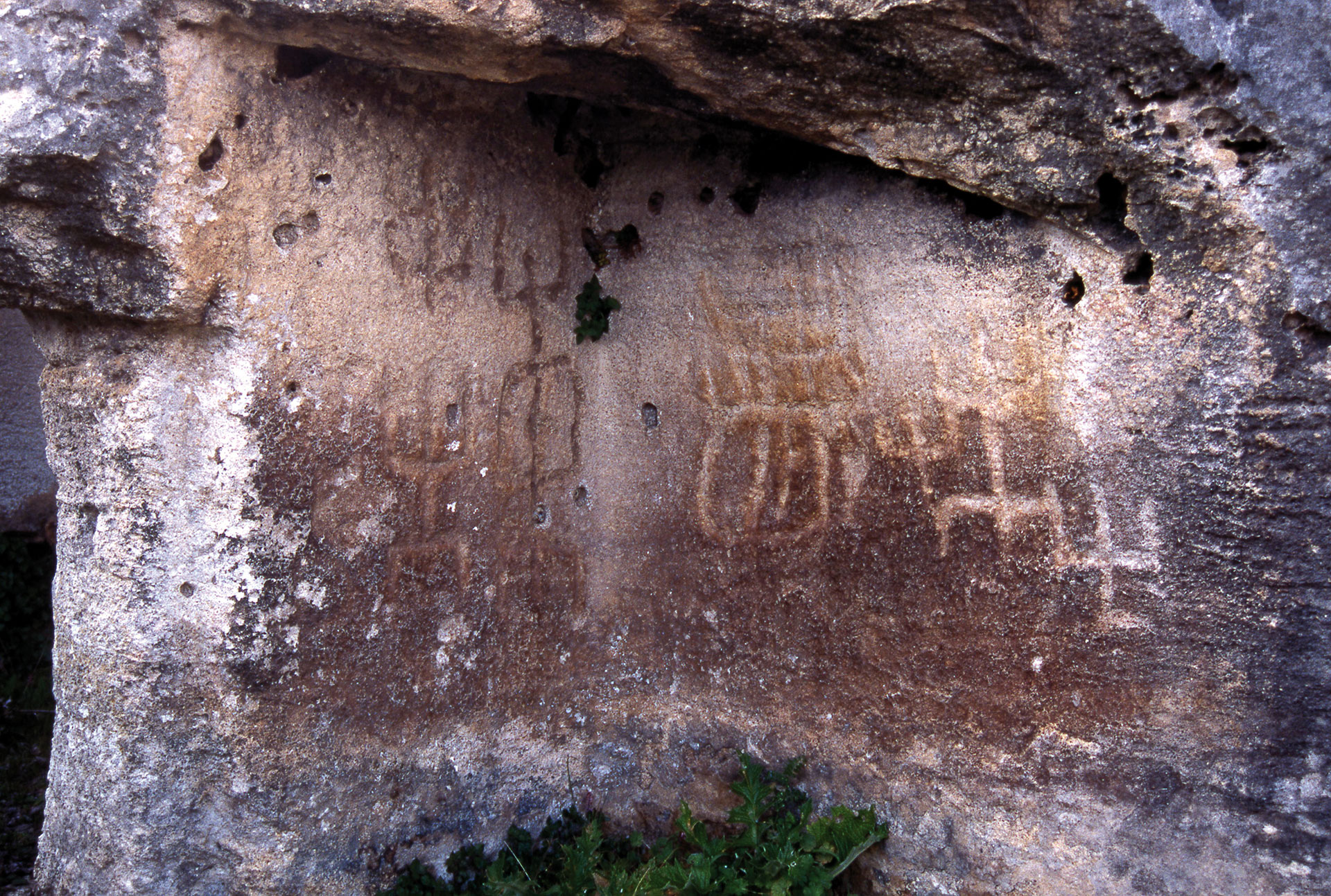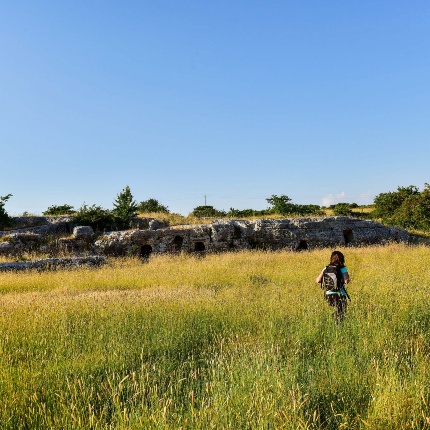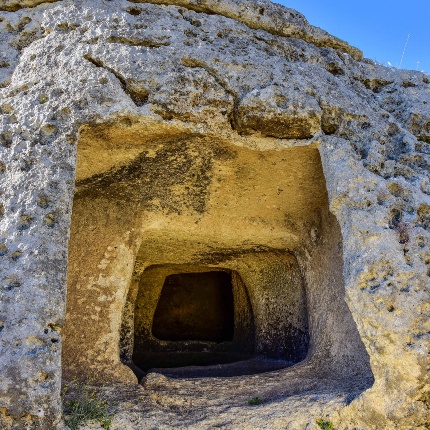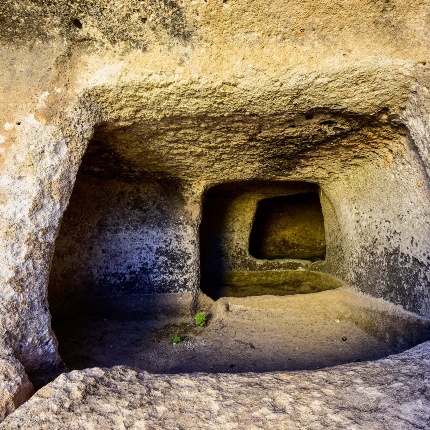Media gallery
Description
The park extends across the vast area of Museddu, Tennero and Mattarigotza where in total, 37 hypogeum tombs (domus de janas, literally "fairy houses") have been identified. These are mostly linked to three necropolises, each distinguished by a monumental tomb.
These are burials from the late Neolithic period (second half of the 4th millennium BC), widely reused during the Eneolithic, or throughout the 3rd millennium BC. During this time, it is believed that the famous Tomba Branca was engraved with Petroglyphs, symbols related to the sacred.
The considerable number of tombs implies a significant settlement phenomenon that involved this area in prehistoric times.
The tombs continued to be used, even for other purposes, in historical times: winemaking facilities dating back to late Roman times can be seen, which were widespread on the same limestone tables, and appear to be linked to the agricultural exploitation of the area.
On the lower walls of the Museddu necropolis, some interesting evidence of block extraction activity can also be identified.
Its original funerary function became predominant in the Vandal and Byzantine periods when burial niches were carved into the limestone table and the Tomb of the Quarry was transformed into a funerary chapel.

Contacts
FPJJ+W4 Cheremule SS, Italia
Today’s weather
14°
Vento ENE 3 km/h
Humidity 77%
Geographical map
Experiences
No experiences found.






